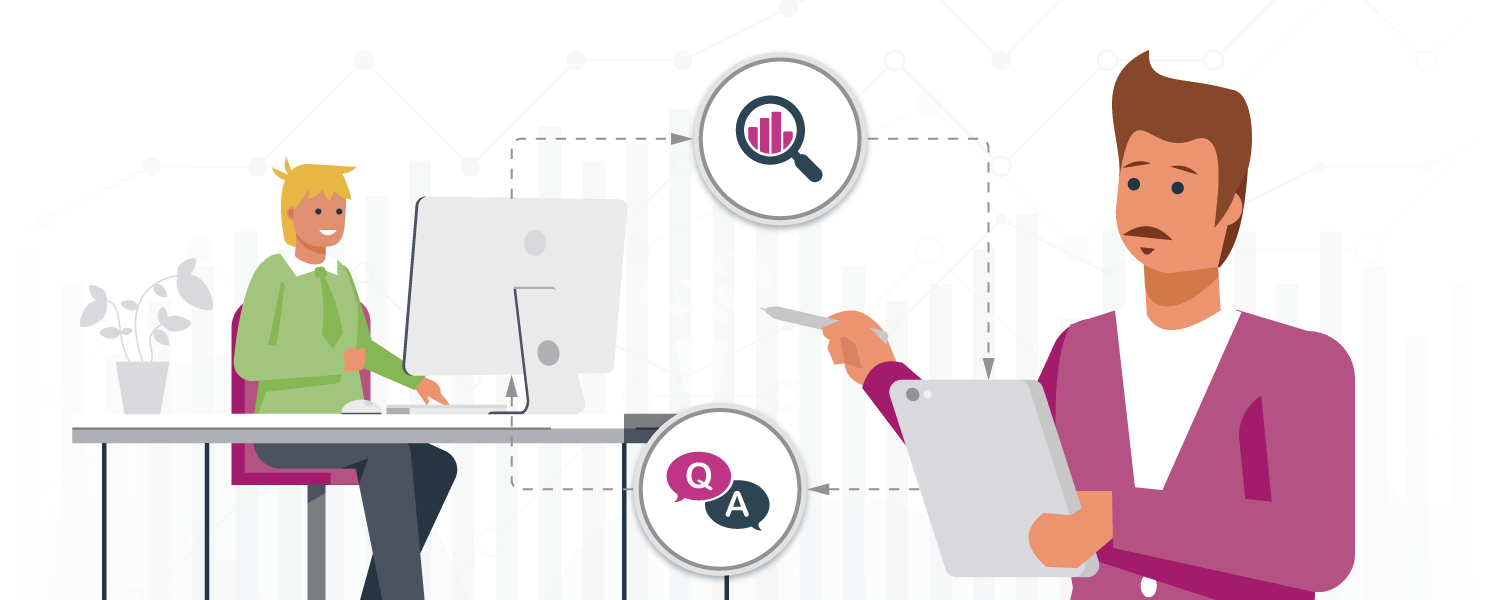The aim of each learning program is to develop the knowledge or skills of your learner. However, designing a successful learning program is only possible if you can identify areas for growth and development for your learners. Using diagnostics, we can focus learning programs on areas where learners may have skill gaps or require additional support. Diagnostics can also help you gauge your program's effectiveness and make improvements to ensure that your program is the best that it possibly can be. But what exactly are diagnostics, and how can we use them to make learning more engaging and effective?
What are diagnostics?
Diagnostics, sometimes referred to as diagnostic assessments, are tests used to obtain more information about a learner, usually focused on their knowledge or skills in an area. There are many different learning metrics and methods that we can use to find out what a learner does or does not know, including quizzes, surveys, reflections or scenarios. Learning metrics are measures used to measure and evaluate aspects of learning programs. Measuring a learner's knowledge or capabilities can help us diagnose what they need from a learning program and better design or alter programs to suit their needs.
Before your Program
Diagnostics are frequently employed at the start of a learning program to determine what a learner knows or can do before starting the program. Using diagnostics may also help you identify a learner's past experiences with online learning, discover issues with their learning behaviours, uncover any misconceptions they may have, and identify the knowledge and skills that the program should aim to develop.
Including a diagnostic assessment before learners begin your program can also help you create highly personalised learning programs that cater to different levels of knowledge or experience with a topic. You can use such an approach to identify and acknowledge learners' strengths. By using advanced authoring software such as Guroo Pro, you can tailor the learning experience to suit your more advanced learners by making some sections optional for high performers/experts in that area. Such an approach can help you avoid spending valuable time teaching learners what they already know and unnecessarily repeating information, which can also be frustrating to learners. In addition, using diagnostics at the start of your program can allow you to personalise the learning experience by identifying areas where the learner may need additional support. This approach will enable you to provide additional learning experiences or coaching to those who may need it most or to different people in the specific areas where they may have skill gaps.
On a broader level, determining your learners' pre-existing knowledge can help you adjust the program to suit the overall needs of the group. You may notice that many of your learners already know a deal about the topic of the program. In this case, you could include some higher-level content to make the course more beneficial and challenging to your learners. Equally, you could discover that your learners have little knowledge about a topic and decide to cover the basics at the start of your program.
During your Program
Diagnostics do not have all to occur at the start of your learning program. You can also use diagnostics throughout to find out how your learners are progressing through the program. Consider a program with multiple, distinct sections. As individuals learn at different paces, it can be challenging to ensure that all of your learners have gained what they need to know from one section and are ready to move on to the next. Using diagnostics, you can assess the learner's understanding of the content after each section and adjust their learning plan accordingly. For example, you could use these measures to determine whether they are ready to move on to the next section or if they need to review the content that they have just learned.
After your Program
Assessing your learners at the end of your program can help you improve your learning program's performance over time. Comparing before and after measures allows you to determine what is working and identify areas for improvement within the program itself. These measures, combined with information collected during the program, can help you to better understand how learners behave within your course. The applications of measuring your learners' progress can also extend beyond your program itself. For example, you could build an action plan to further develop learners' skills based on their abilities after the program, encouraging learners to enrol in further courses to build their skills.
Overall, diagnostic assessments allow you to learn more about your learners and build more effective, meaningful and personal learning programs. If you are looking for an authoring software capable of gathering and using these insights, take a look at Guroo Pro!

.png)

